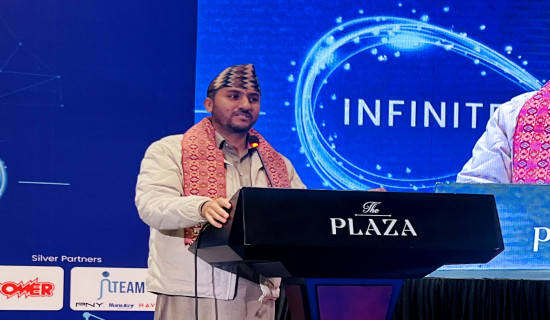- Sunday, 21 December 2025
Indian Polls: BJP Suffers A Setback
A 45-day-long electoral process has come crashing down on India’s ruling Bharatiya Janata Party and brought the main opposition Indian National Congress back from the brink of its 240-year history, albeit feebly, thanks to generous support from the Indian National Developmental Inclusive Alliance (INDIA). The BJP itself has fallen short of a majority by securing 240 seats in the 543-member Lok Sabha, triggering calls from certain quarters for Prime Minister Narendra Modi’s resignation as the latter himself — or his ‘guarantee’ — was the main agenda for this election.
Nonetheless, the National Democratic Alliance (NDA) consisting of the BJP, Chandrababu Naidu-led Telugu Desham Party (TDP) and the Nitish Kumar-led Janata Dal (United), among other partners, has clinched 295 seats in the Lok Sabha, offering some respite to the BJP as the NDA has crossed the halfway mark of 272 seats required for a majority in the lower chamber of the bicameral parliament at the Centre. Still, there’s no guarantee that the 16-seat-strong TDP and the 12-seat-strong JD (U) won’t seek to switch allegiance as more lucrative offers are likely to come their way from the INDIA bloc.
Slide
NDA’s 295 seats in 2024 mark a considerable slide in popularity of the ruling alliance in comparison to 2019, when it secured 352 seats, with the BJP alone contributing to a whopping 303 seats compared to just 240 seats in 2024. This humbling of the BJP at the hands of the Indian electorate may be seen as a sign of a waning charisma and pan-India appeal of Narendra Modi, both as the prime minister and the BJP leader, particularly in the Hindi belt consisting of Bihar, Chandigarh, Chhattisgarh, Delhi, Haryana, Himachal Pradesh, Jharkhand, Madhya Pradesh, Rajasthan, Uttarakhand and Uttar Pradesh, which, together, account for over 250 seats in the 543-member Lok Sabha.
This is because BJP drew its strength almost solely from the ‘Vikas Purush’ and ‘Divya Purush’ this election season. It has now become clear that the BJP’s rallying cry ‘Ab Ki Baar, 400 Paar’ — 400 seats this time around — was meant to energise the party rank and file and boost their morale in the midst of an anti-incumbency setting. In all likelihood, the BJP will form the next government marking its third straight term in power, given the INC’s not-so-impressive 99 seats (a remarkable improvement compared to 52 seats in 2019) mean that it has ‘won’ the mandate to stay on in the opposition.
PM Modi’s tweet after the election results indicates just that. He wrote: "People have placed their faith in NDA, for a third consecutive time! This is a historical feat in India’s history. I bow to the Janata Janardan for this affection and assure them that we will continue the good work done in the last decade to keep fulfilling the aspirations of people. … Words will never do justice to their exceptional efforts."
During its election campaign, among other achievements like India’s rising global stature, its emergence as the fifth largest economy ($3,942 billion) and provisioning of free food grains to about 810.35 million people for five years, the BJP highlighted the construction and consecration of a Ram temple in Ayodhya, proclaiming that it had brought ‘Ram to his birthplace’ and kept a promise made to the people years ago.
But a huge setback came at the very place as Lallu Singh, the BJP candidate in Faizabad, which is home to the temple, lost the party’s seat to Samajwadi Party candidate Awadhesh Prasad by a margin of 54,567 votes, thanks also to bonhomie with the INC. Another shock came in Amethi, where Smriti Irani lost the BJP seat to INC’s Kishori Lal Sharma by a margin of over 1.6 lakh votes, in a full reversal of the 2019 BJP wave that saw Irani defeat Rahul Gandhi. PM Modi won the Varanasi seat yet again, defeating INC candidate Ajay Rai by a margin of 152,000 votes, highlighting a remarkable slide in Modi’s appeal compared to 2019 when he won the same seat by 500,000 votes five years ago.
Divisive politics
What caused the BJP’s poor showing in the 2014 elections? A slew of factors perhaps played a part. The ruling party built and consecrated a Ram temple at Ayodhya, winning hearts and minds of lakhs of Hindus, but did this turn into a big vote churner? Perhaps not because the lesser mortals spread across the ethnic-religional-regional divide had a slew of common concerns as well. They included the lack of jobs, deepening rural distress afflicting farmers, rising communal divide and alienation of sections of the national population. These people needed Ram but they needed Kam (jobs) also, which are indeed difficult to create in the world’s most populous country with a population of more than 1.4 billion and a 640-million-strong electorate.
The divisive politics that was at play during and before the elections must have alienated a significant chunk of the religious minority that comprises around 14.2 per cent of India’s population. A perceived or real design to amend the constitution also played its part, perhaps. As some of the candidates sought a thumping victory (more than 400 seats) for the BJP to change the charter, segments of the population consolidated against the party further fearing that the secular provision of the constitution will be gone along with the provisions of reservation if the BJP returns to power.
(The author is a freelancer.)

















